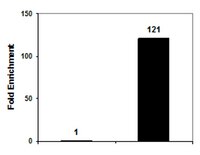05-1336-S Sigma-AldrichAnti-phospho-Histone H3 (Ser10) Antibody, clone CMA312, Trial Size
Anti-phospho-Histone H3 (Ser10) Antibody, clone CMA312 is a mouse monoclonal antibody for detection of phospho-Histone H3 (Ser10) also known as H3S10P, Histone H3 (phospho S10) & has been validated in WB, ELISA, ICC, Multiplexing and ChIP.
More>> Anti-phospho-Histone H3 (Ser10) Antibody, clone CMA312 is a mouse monoclonal antibody for detection of phospho-Histone H3 (Ser10) also known as H3S10P, Histone H3 (phospho S10) & has been validated in WB, ELISA, ICC, Multiplexing and ChIP. Less<<Recommended Products
Overview
| Replacement Information |
|---|
Key Specifications Table
| Species Reactivity | Key Applications | Host | Format | Antibody Type |
|---|---|---|---|---|
| H, Vrt | WB, ELISA, ICC, Mplex, ChIP | M | Purified | Monoclonal Antibody |
| References |
|---|
| Product Information | |
|---|---|
| Format | Purified |
| Control |
|
| Presentation | Purified mouse monoclonal IgG in PBS with 0.05% sodium azide. |
| Quality Level | MQ100 |
| Physicochemical Information |
|---|
| Dimensions |
|---|
| Materials Information |
|---|
| Toxicological Information |
|---|
| Safety Information according to GHS |
|---|
| Safety Information |
|---|
| Packaging Information | |
|---|---|
| Material Size | 10 µg |
| Transport Information |
|---|
| Supplemental Information |
|---|
| Specifications |
|---|
| Global Trade Item Number | |
|---|---|
| Catalog Number | GTIN |
| 05-1336-S | 04053252926204 |
Documentation
Anti-phospho-Histone H3 (Ser10) Antibody, clone CMA312, Trial Size SDS
| Title |
|---|









